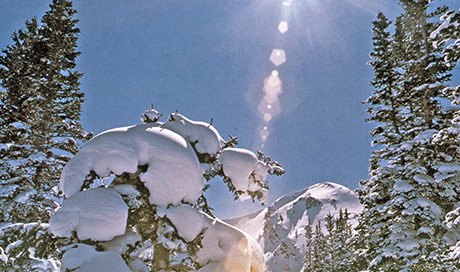When you think of electricity being generated from hydroelectric dams, you might first picture rushing rivers that spin giant turbines. But the story actually begins on snowcapped mountains.
Hydropower is the conversion of flowing water into electricity. Hydropower is considered a renewable energy source, meaning its fuel is replenished by nature, or more specifically in this case, by the water cycle. The water that drives the Northwest’s hydroelectric generators comes from rain and snow further upstream that falls within the Columbia River Basin – a vast area that begins in the Rocky Mountains of British Columbia and flows down through most of Washington, Oregon, Idaho and western Montana.

Precipitation that falls as rain helps keep the rivers flowing in the winter and spring, but it’s the melting snow that carries us through the dry summer months. The amount of snow that accumulates high in the mountains – the snowpack – is vital to the energy needs of the Northwest and is highly variable from year to year.
Source: bpa.gov

